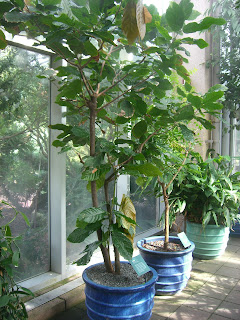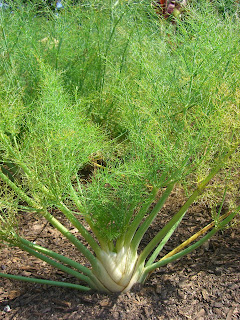Winter made an appearance in the Edible Garden
 |
| Cabbage 'Buscaro' |
 |
| Kale 'Winterbor' |
 |
| Radicchio 'Rossa di Verona' |
 |
| Broccoli 'Romanesco' |
I have to admit that this picture is misleading. The blanket of white is actually frost cloth. While many of the plants in the Edible Garden will survive a winter in Atlanta Atlanta Botanical Garden
The Herb Wall received a protective layer of frost cloth because some sections are newly planted and the wall design leaves plants exposed to the cold air.
Tips from Atlanta Botanical Garden’s Amanda Campbell and Colleen Dudley:
- Horticulturists at the Garden order frost cloth by the roll. Home Depot and Pike’s sell something similar, although thinner.
- Sheets and old blankets can protect plants if you don’t want to invest in frost cloth.
- Plastic isn’t recommended for covering plants since it doesn’t breathe, traps moisture, and can scald plants if the sun comes out and temperatures warm up before it is removed.
- When you are expecting a freeze, it’s important to make sure that your plants are well watered. Turgid plants can withstand the freeze better. When frozen plants start to thaw out, the tops will warm up faster than the roots. Frozen roots can’t transport water and a thirsty plant could become stunted or die.
- Parsley may die back to its crown after exposure to cold temperatures. Cut off the dead leaves and it should re-emerge.



















































